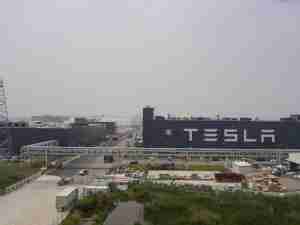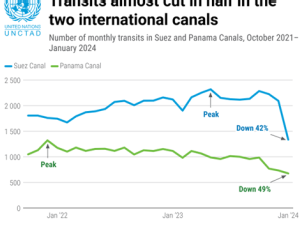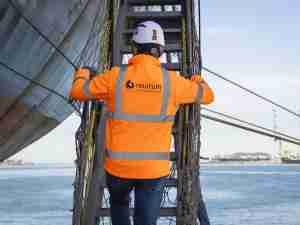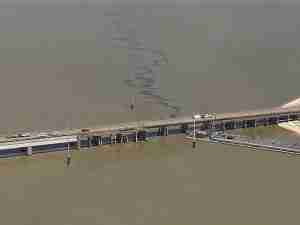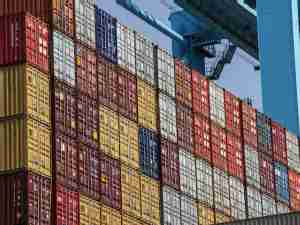Port’s ability to handle big ships allows for arrival of 11,000 TEU container vessel Gunde Maersk
BALTIMORE, MD - The Helen Delich Bentley Port of Baltimore welcomed the largest container ship to ever visit Maryland as the Gunde Maersk, which has a capacity to handle 11,000 Twenty-foot Equivalent (TEU) containers, arrived at the Seagirt Marine Terminal yesterday and worked through today. The massive vessel was able to call the Port of Baltimore because of the Port’s 50-foot deep channel and its supersized Neo-Panamax cranes.
“As a leading economic engine for our state, the Port of Baltimore is well-positioned to continue welcoming some of the largest container ships in the world,” said Governor Larry Hogan. “Our administration will continue making the necessary investments to help this vital asset grow and ensure that the Port remains open for business.”
Previously, the largest container ship to visit the Port of Baltimore was an MSC vessel in 2017 with a capacity of 9,700 TEU containers. The Port of Baltimore is one of the few ports on the East Coast to have a 50-foot deep channel that is necessary to accommodate large ships. Under a public-private partnership with the Maryland Department of Transportation Maryland Port Administration (MDOT MPA), the Seagirt Marine Terminal is operated by Ports America Chesapeake.
In September, Governor Hogan and the Maryland Board of Public Works approved a contract that will complete the fill in of a wet basin at the Port’s Fairfield Marine Terminal. This will create more land in a prime location adjacent to the piers to help handle the Port’s surging auto cargo.
In August the Port of Baltimore’s state-owned marine terminals handled 65,281 cars and light trucks, the highest monthly amount on record ever.
In addition to the record month for cars, the Port’s state-owned marine terminals in 2018 have established records for:
- Best Fiscal Year (July 2017-June 2018) for general cargo tons: 10,976,270 tons
- Best Quarter for general cargo tons: 2,797,656 tons (second quarter)
- Best 1st Six months for general cargo tons: 5,562,954 tons
- Most TEU (Twenty-foot Equivalent Unit) containers in one month: 90,152 in May.
The Port of Baltimore’s strong performance in 2018 follows a successful 2017 when its public and private auto terminals handled a record 807,194 cars and light trucks. It was the first time surpassing the 800,000 car/light truck mark and the seventh consecutive year that the Port had handled more cars and light trucks than any other U.S. port.
In 2017, the Port of Baltimore’s public and private marine terminals handled 38.4 million tons of cargo, the most since 1979 and the third-highest tonnage in its history. The public marine terminals, managed by the MDOT MPA, handled a record 10.7 million tons of general cargo. It was the second consecutive year the public terminals handled more than 10 million tons of general cargo. Included in the general cargo number was a record 596,972 containers, an 11 percent jump from the previous record set in 2016.
Among the nation’s ports, the Port of Baltimore ranks first for autos and light trucks, roll on/roll off heavy farm and construction machinery, and imported sugar. The Port ranks second in exported coal. Overall, the Port ranks ninth among all ports for the total dollar value of cargo and 12th in foreign cargo tonnage. Business at the Port of Baltimore generates about 13,650 direct jobs, while about 127,600 jobs in Maryland are linked to Port activities. The Port is responsible for nearly $3 billion in personal wages and salary and $310 million in state and local tax revenues.
